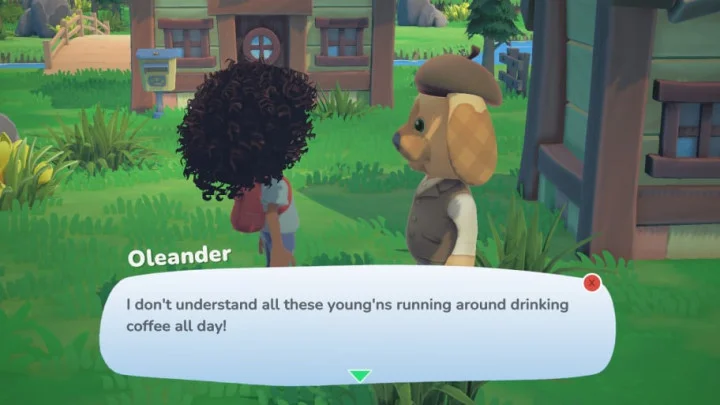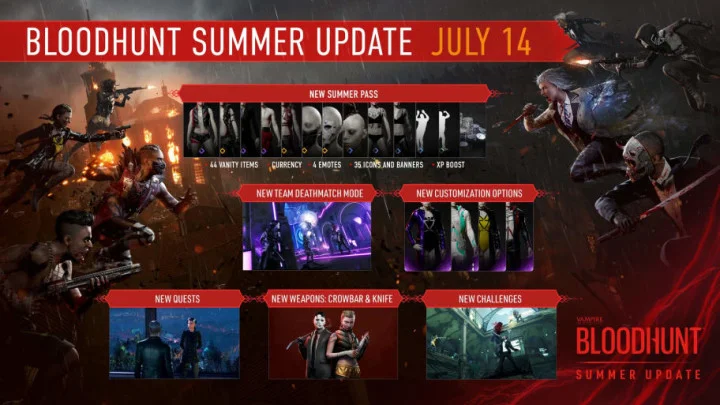In an ever more uncertain world, developers have saturated the market with Animal Crossing and Stardew Valley clones seeking to improve on their inspirations’ gameplay. Just as many miss the mark as hit, and Wonderscope’s Hokko Life falls just short of the latter camp. It’s perhaps the closest a game could be to Animal Crossing without Nintendo’s lawyers getting involved, Despite expanded features and a few quality of life improvements over Nintendo’s property, Hokko Life’s feng shui is flawed. Worse still, its undeniable similarities make it hard to view as its own entity.
Credit where credit is due: Hokko Life did give me the option to have a textured hairstyle from the get-go, though that’s about as much praise as I can give the character creator. Outside of freckles there’s little variety to add to your avatar. Players all get the same large, empty eyes and the same rag doll-like smile. Ironically, my dumpy Hokko avatar looks pretty close to my real life appearance, but I prefer to have a few more options to change that in virtual form. Hokko’s animal townsfolk aren’t treated much better, given oddly humanoid features and few facial expressions to swerve them away from the uncanny valley. Get past their unsettling appearance, though, and there’s a competent, if uninspired, life sim experience waiting for you.
Hokko Life begins by dropping the player into the town of Hokko with no house, no friends and no sense of purpose. Until you meet Oma, the town's pink elephant innkeeper. Oma takes you in from the cold and introduces you to fellow business owner Moss, who runs the local shop. These two characters kickstart your first few days in Hokko, helping you to get acquainted with the other residents. Like Animal Crossing, players will have two starting residents to chat with, each offering some small tasks to help learn the basic mechanics. Things like resource gathering, flower planting, bug catching, and crafting.
The last is more involved than in Animal Crossing, but less intuitive. Players need to head to the workshop located to the right of town and run by a perky dog named Sally. She introduces players to a crafting bench and a design bench, each enabling different crafting recipes. Simple resource items like wooden planks and bricks are made at the crafting table, but so are placeable items like plant pots and fences. The design bench is used for more complicated structures, like tables and bookcases, usually made up of the craftable resource items.
Players will also eventually unlock the ability to create their own items from scratch using resources they’ve collected. This feature has a lot of potential, allowing more creatively-inclined players to shine, but the in-game builder is a bit clunky. Without patience your custom creations run the risk of appearing slightly askew, or just plain ugly. It’s easy to spend ages designing a simple table, but likely out of frustration rather than creative passion.
You’ll spend a lot of time running back and forth from the workshop, crafting a multitude of things for the townsfolk. Completing these requests is a bit unclear at first. One resident, Oleander, asked me to build two benches to spruce up the town. I gathered the resources, built two lovely benches, and placed them in convenient and aesthetically pleasing locations. I returned to Oleander to inform him of my good work only to have him turn around and ask why I hadn’t built any benches. "They’re there!" I yelled, confused and gesturing at the screen. "Use your lifeless eyes, Oleander!"
Eventually I realized that he wanted me to build the benches and show them to him from my inventory. I packed up the benches, one of which Oleander was already sitting on, and showed him the items he’d just been using in order for him to acknowledge that yes, I had in fact built benches. It was all a bit awkward and I was ready to do away with Oleander just for the inconvenience.
Once you’ve learned the process, the quests feel less confusing. Townsfolk will ask you to build them all kinds of furniture, and trust you to place it wherever you want in their houses — after you’ve shown it to them, of course. One element that is surprisingly easier in Hokko Life than in Animal Crossing is gaining new residents and moving them in. Rather than having to shell out a small fortune to a greedy tanooki, players in Hokko Life need to supply a pig called Rosa with some resources and a little bit of coin to build each house.
We meet Rosa at Oma’s Inn, where she offers up her services as a realtor. She mentions she already has a client who’d love to move into the town once a new home is built. The new house takes a few in-game days to complete — you can sleep to speed things along — after which Rosa and the new client will be waiting outside. In my case, it was another creepy pig named Pip. I found myself already planning his eviction. After my arch nemesis Oleander, of course.
Later, Oma mentions that she’s had others come to the inn who have expressed interest in moving. She asks that you swing by to convince them to join the community, but they’re only around at specific times (Lunch or Dinner). Checking the sign outside reveals when the window is for those two times and you can wait around, do some activities, or sleep a few hours to pass the time.
Despite a few frustrations, once you get into the swing of things Hokko Life isn’t a bad little game. There are new and large spaces to explore that gradually open up with each passing day. There are plenty of items to craft and customize. Players don’t have to worry about "time traveling" to refresh in-game content, and can instead simply sleep in their house to prompt the next day to start.
But you’ll find yourself doing this a lot, sleeping each day away so that trees grow back, the shop refreshes or projects are built sooner. Townsfolk dialogue doesn’t offer much to persuade you to stick around, either. The town feels empty, and without much expression coming from the character models it’s hard to find yourself wanting to talk to them.
It’s hard to deny that care has been taken to make Hokko Life convenient. You can craft items in batches, and you can move structures at whim. If you see an object in your neighbor’s house that you like, you can even pinch it for yourself. It might not be moral, but they don’t seem to mind. There is a clear audience for Hokko Life: If you grew frustrated with Animal Crossing’s limited quality of life features, don't care much for villager interaction, or just want to play something similar on PC, then Hokko Life is a worthy alternative. If you’re after the same charm and polish, try the next town over.
DBLTAP Rating: B-
Hokko Life, developed by Wonderscope, is available now on PlayStation 4, Xbox One, Nintendo Switch, PC and Amazon Luna.
DBLTAP was provided with a copy of Hokko Life for review by its publisher, Team 17.
This article was originally published on dbltap as Convenience Trumps Charm in Animal Crossing-Inspired Hokko Life.









